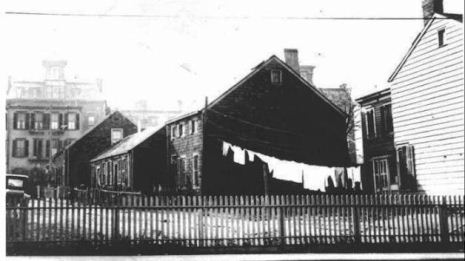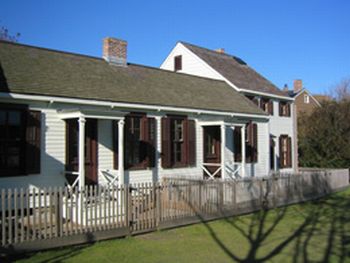
 Weeksville was a nineteenth century free black community located in what is now the Bedford-Stuyvesant area of Brooklyn, New York. In 1838, only 11 years after slavery ended in New York, Weeksville was formed by a free black man named James Weeks when he purchased a substantial area of land from Henry C. Thompson, another free black man. Weeks then encouraged other blacks to settle on the property and he sold lots to the newcomers who named the community Weeksville.
Weeksville was a nineteenth century free black community located in what is now the Bedford-Stuyvesant area of Brooklyn, New York. In 1838, only 11 years after slavery ended in New York, Weeksville was formed by a free black man named James Weeks when he purchased a substantial area of land from Henry C. Thompson, another free black man. Weeks then encouraged other blacks to settle on the property and he sold lots to the newcomers who named the community Weeksville.
Weeksville quickly became a self-sufficient and thriving free black community. It also became a refuge for southern blacks fleeing slavery and for northern blacks who desired to escape racial violence and draft riots in New York and other cities. By 1850, it was the second largest community for free blacks in pre-Civil War America.

The community was known for employing blacks in urban occupations and it was a community where black doctors, professionals, and entrepreneurs were able to practice skills and develop clientele. Weeksville residents established churches, schools, benevolent associations, an elderly home, and had an orphanage by the 1860s.
 Weeksville not only provided opportunities for blacks to attain entrepreneurial success, but also offered political and intellectual freedoms. Community members participated in a wide range of anti-slavery action and promoted equal rights for free blacks, including voting rights campaigns, the black convention movement, and resistance to the 1863 New York City Draft Riots.
Weeksville not only provided opportunities for blacks to attain entrepreneurial success, but also offered political and intellectual freedoms. Community members participated in a wide range of anti-slavery action and promoted equal rights for free blacks, including voting rights campaigns, the black convention movement, and resistance to the 1863 New York City Draft Riots.
Even though the community existed until the 1930s, it was overtaken by the growth of Brooklyn and almost forgotten amidst urban renewal plans of the 1950s when many of its old buildings were replaced by newer structures. In 1968, subway engineer James Hurley and pilot Joseph Haynes rediscovered and worked to save four wooden cottages, now known as the Hunterfly Road Houses, that are now the only existing remnants of 19th Century Weeksville.
The homes were threatened by demolition plans shortly after their discovery but Joan Maynard, the first Executive Director of the Weeksville Society, was successful in leading youth groups and members of the community in a campaign to preserve the houses. Weeksville achieved landmark status in 1971. In 2005, the four homes were fully restored and open to the public.
